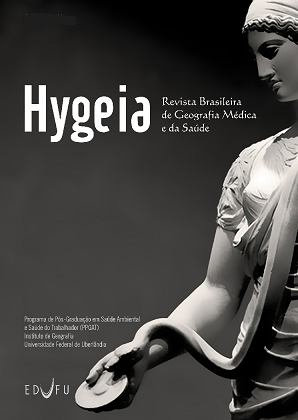ON DIPTERA AS SPREADERS OF DISEASE (Classics Revisited)
DOI:
https://doi.org/10.14393/Hygeia416921Resumo
The two-winged flies, in their behavior to man, stand in a marked contrast to all the other orders of insects. The Lepidoptera, the Coleoptera, the Neuroptera, the Hymenoptera no doubt occasion, in some of their forms at least, much damage to our crops. But none of them are parasitic in or upon our bodies; none of them persistently intrude into our dwellings, hover around us in our walks, and harass us with noise and constant attempts to bite, or at least to crawl upon us. Even the ants, except in a few tropical districts, rarely act upon the offensive. The Hemiptera contain one semi-parasitic species which has attained a "world-wide circulation," and one degraded, purely parasitic group. But the Diptera, among which the fleas are now generally included as a degenerated type, comprise more forms personally annoying to man than all the remaining insect orders put together. These hostile species are, further, incalculably numerous, and occur in every part of the globe. Mosquitoes swarm not merely in the swampy forests of the Orinoco or the Irrawaddy, but in the Tundras of Siberia, en the storm-beaten rocks of the Loffodens, and are even encountered by voyagers in quest of the North Pole. The common house fly was probably at one time peculiar to the Eastern Continent, but it followed the footsteps of the Pilgrim Fathers, and is now as great a nuisance in the United Slates and the Dominion as in any part of Europe. It is curious, but distressing, to note the tendency of evils to become international. We have communicated to America the house-fly and the Hessian fly, the "cabbage-white," the small pox, and the cholera. She, in return, has given us the Phylloxera, a few visitations of yellow fever, the Blatta gigantea, and, climate allowing, may perhaps throw in the Colorado beetle as a make-weight. In this department, at least, free trade reigns undisputed. It is a singular thing that no beautiful, useful, or even harmless species of bird or insect seems capable of acclimatizing itself as do those characterized by ugliness and noisomeness.Downloads
Os dados de download ainda não estão disponíveis.
Downloads
Publicado
27-02-2009
Edição
Seção
Artigos
Licença
A submissão do texto por meio eletrônico implica a transferência de direitos exclusivos de publicação, por seis meses a partir da data de submissão. A partir da data do aceite para publicação, os direitos se entendem por mais outros seis meses. Ao publicar o texto, a revista se reserva o direito de manter o trabalho permanentemente disponível, permitindo-se ao autor, após os seis meses de exclusividade mencionados, a republicação, em quaisquer outros meios de divulgação, desde que mencionada a fonte original.Como Citar
SLATER, J. W. ON DIPTERA AS SPREADERS OF DISEASE (Classics Revisited). Hygeia - Revista Brasileira de Geografia Médica e da Saúde, Uberlândia, v. 4, n. 7, p. 1–7, 2009. DOI: 10.14393/Hygeia416921. Disponível em: https://seer.ufu.br/index.php/hygeia/article/view/16921. Acesso em: 22 dez. 2025.








